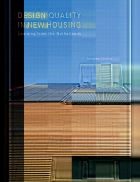




Mã tài liệu: 203127
Số trang: 176
Định dạng: pdf
Dung lượng file: 17,738 Kb
Chuyên mục: Khoa học công nghệ
Những tài liệu gần giống với tài liệu bạn đang xem
📎 Số trang: 193
👁 Lượt xem: 298
⬇ Lượt tải: 16
📎 Số trang: 724
👁 Lượt xem: 268
⬇ Lượt tải: 16
Những tài liệu bạn đã xem
 Design Quality in New Housing
What is design quality? The term design quality is often used in relation to the built environment for ensuring value and competitiveness within the construction industry. It is, however, an ambiguous term and difficult to define. Design quality
pdf Đăng bởi
khoaphan28
Design Quality in New Housing
What is design quality? The term design quality is often used in relation to the built environment for ensuring value and competitiveness within the construction industry. It is, however, an ambiguous term and difficult to define. Design quality
pdf Đăng bởi
khoaphan28